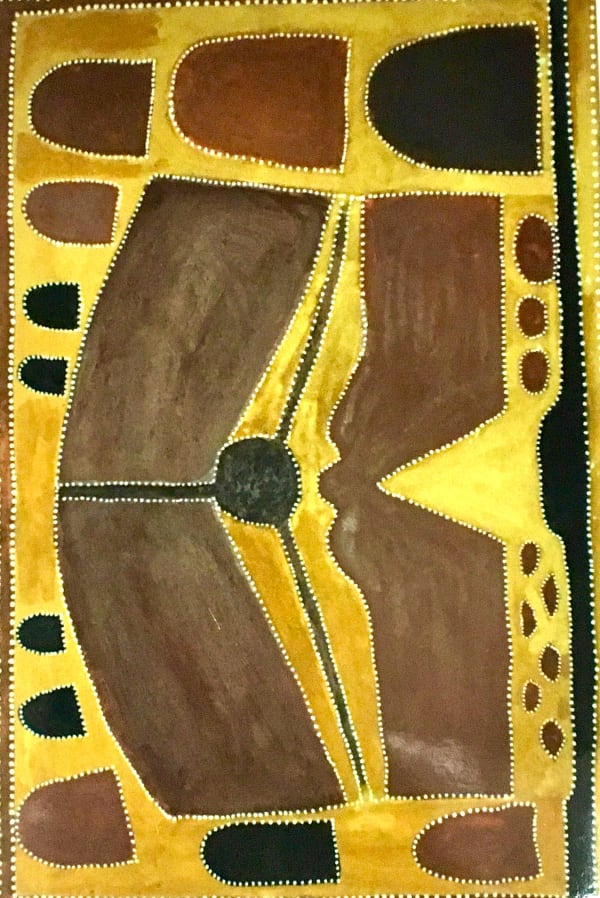Queenie McKenzie
Overview
Often falsely assumed to be an acrylic painter on account of her iconic palette of sumptuous pastel pinks and blues, Queenie McKenzie Nakara (1915 - 1998) is revered for her knowledge of secret ochre pits from which she gathered her materials. Born in 1915, the artist was a strong Gija woman from the East Kimberley. She was born on Old Texas Station on the Ord River in the North West of Western Australia. As a young girl she spent her time cooking for local stockmen, tending and riding horses, and journeying across the vast pastoral region of the north driving cattle.
Her unyielding connection to her country and culture was celebrated in the extraordinary ochre paintings she created, depicting the mountains and rivers of her homelands.. She began her artistic explorations drawing designs emulating the ceremonial body painting used in women's ritual and later by embracing illustration as a way of teaching the children in her community.
During the 1970s, then in middle-age, Queenie McKenzie played a leading role in her community, negotiating protections for sacred women's sites at the Argyle diamond mine and ensuring that women's business continued. Throughout her life, she was committed to engaging the younger generations with their culture and language. Serving as teacher in a local school, Queenie McKenzie equipped the youth with a spiritual awareness and involvement in community activities, determined to preserve and extend ancient knowledge of the sacred sites and the Dreaming mythology.
Like many Desert Painters, Queenie McKenzie began painting on canvas in the final decade of her life. The artist was relatively prolific, confidently sharing her admiration for the geographical features that make up the East Kimberley landscape, including the tremendous Ord River and Purnululu (the Bungle Bungles). For as many years as she was able, McKenzie gathered her own ochres, which she would then mix into a variety of colors, creating her favorite palette of pinks, baby-blues and browns.
McKenzie was a close friend to artist Rover Thomas. Much like Thomas, McKenzie's work focused on depictions of her country, though in some works she shared insight into the social issues her community were grappling with, including alcoholism and the recent history of massacres.
In 'Hills of Texas' (1995), the artist depicts the hills of the Old Texas Station. The hills are rendered in a variety of colors, with Horseshoe Creek running between them. The trees are the old ghost gum trees native to the region. Queenie McKenzie remembered being tied to one such tree as a child after fleeing a police officer.
The artist was an important cultural leader and artist who was compelled to share her culture. Her intimate connection and respect for her Country was generously celebrated in each of her works. Queenie McKenzie has been exhibited widely and her works are represented in major collections including the Australian National Gallery, National Gallery of Victoria, Art Gallery of Western Australia, and the Berndt Museum of Anthropology (University of Western Australia). Towards the close of her life Queenie McKenzie was declared a State Living Treasure by the Australian Ministry for Culture for her unique contribution to the arts and culture and the teaching of the Gija language.
Works
Exhibitions




